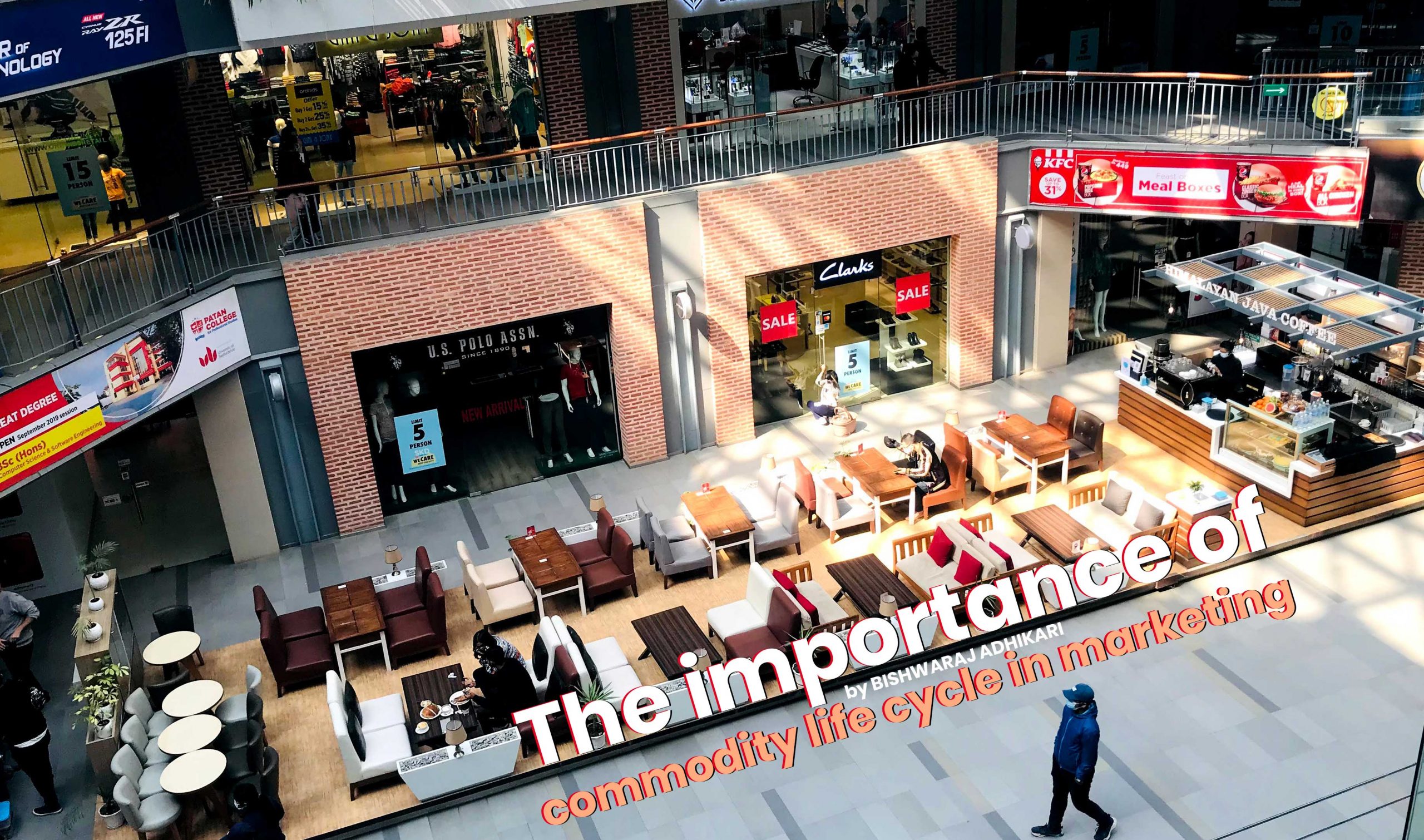
The importance of commodity life cycle in marketing
BISHWARAJ ADHIKARI
Just as a human has a life cycle, so does an object have a life cycle. There are four stages in the life cycle of human beings – birth, youth, adulthood, and death.
The only important difference or feature in the life cycle of humans and objects is that in the life cycle of the object, the life span of the object is very long, and also some objects have attained immortality. Such as plate, glass, bowl, cot, pillow, etc. These are objects that may vary in the raw materials used in their construction, but these objects survive as long as human civilization lasts, not die. Hinjo Asti used to be earthenware glass, nowadays glass and plastic glasses are in use. But there are some things that were there at some point in time but are not there now. These items have reached the stage of introduction, development, and prosperity and have disappeared from the market. Such as hand-operated typewriters, printing presses using iron or rubber letters, ink pens, breathable clocks, reel-taking cameras, etc. Have died.

This article seeks to discuss the life cycle of a commodity in a special way because it relates employment and poverty to the life cycle of a commodity and the development of a new commodity. Due to the life cycle of the commodity or the replacement of a dead commodity with a new commodity, new commodities are constantly being developed in the market. On the one hand, the demand for new products is on the rise, and on the other hand, people get employment by producing these products. On the other hand, employment is directly related to poverty. The development of new goods puts the money of those who have food (good spendable income) in the hands of the poor. Relatively well-fed people spend more on new things. In the case of Nepal, for example, there is a high demand for new items (smartphones). Those who have a good income spend a lot of money on smartphones. There is another aspect of not producing smartphones in Nepal. While in Nepal, many employment opportunities can be created by importing and producing smartphone parts from China.
There are two types of renewal that are done by adding additional features to the most recent and existing items.
By knowing the needs and desires of the customer, the new product is developed accordingly. This is the first way to develop a new product. Under this method, the consumer’s need is converted into a commodity. And this work continues. In developed or rich markets (US, Europe, etc.) it does not take long for consumer needs to become a commodity. It happens quickly. Consumers, for example, felt the need for a mobile phone or cellphone cover, and manufacturers immediately produced and marketed it. Consumer needs quickly turned into commodities. The new need took the shape of a new object.
Consumers also develop items that do not feel the need or are not in demand in the market. This type of method is called the second method of commodity development. This is mainly done by the traders for the purpose of making more profit. That is to say, in order to get more profit in a short period of time by producing new kinds of goods, traders develop new kind of new kinds of goods. Smartwatches, iPads, smart TVs, Alexa apps, etc. are new items that consumers have not demanded but have been developed by merchants to increase their profits. Consumers become addicted to such products and continue to use them and eventually decide that they need them. And constantly buy.
The reason why the context of commodity development is mentioned here is that there is very little tradition, readiness, or thinking to develop new commodities in Nepal. By developing new goods, by creating new jobs in the market, the existing unemployment in the country can be reduced, and also poverty can be reduced. And by doing so, the money in the hands of the rich can be transferred to the hands of the poor.
We still adhere to the traditional market management concept. In market management, in consumer psychology, we are not excited to use our new thinking. We are busy selling goods developed by rich or developed countries. You do not want to be frustrated if you cannot get the right pitch so invest in a good capo. And become unable to make more profit.
We are totally dependent on goods produced in India and China. Most of the new items we get are from China and India.
We are not able to develop new things on our own. And we are losing the opportunity to earn a good income by developing new products.
Let’s talk briefly about how to produce a new product:
Nowadays a large number of health-damaging fertilizers are used in vegetable production. Since the effects of such deadly fertilizers will be felt in the health of consumers in the long run, it is not immediately clear what kind of effects the three will have. Consumers buy such mixed vegetables because we do not have any other alternative vegetables. This market situation can be taken as an opportunity. We can earn a good income by producing healthy, new kinds of vegetables (the new commodity) without any kind of fertilizer, by selling them at high prices.
There are many possibilities to produce new kinds of goods in our country. Only one example is given above.
Since developing new products can create more jobs and the money of the rich can reach the poor, we need to invest more thinking and labor capital in the development of new products.

